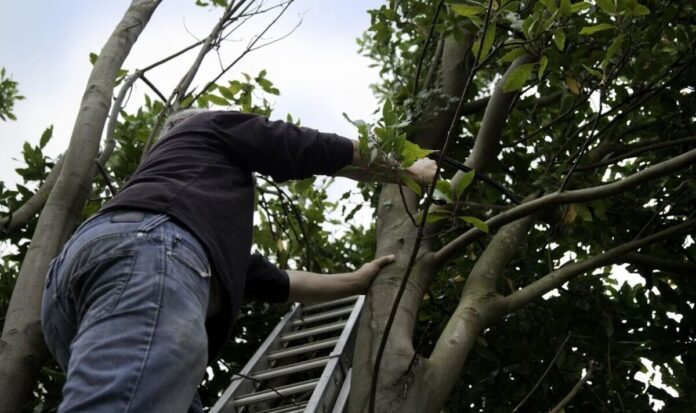Gardeners risk being slapped with ‘£20,000’ fine over common maintenance task (Image: Getty) Understanding and being aware of the rules around gardens can not only improve your relationship with neighbours but avoid being landed with a fine of up to £20,000. However, only in extreme cases are fines likely to be issued, and normally disputes with neighbours can be resolved with a friendly chat, but it’s best for households to know their rights. To help gardeners out, experts at Toolstation have put together a list of some of the garden laws people might not be aware of. 1. Feeding birds There are no specific laws in the UK that make it illegal for individuals to feed birds, and it is usually encouraged in order to keep wildlife happy and healthy. But some wildlife, such as rats , aren’t looked upon as kindly. Unfortunately, if bird feed isn’t stored properly, it can attract rats which may be a nuisance to neighbours. If bird feed isn’t stored properly, it can attract rats (Image: Getty) If the situation turns particularly bad and rats become a problem, households could be issued with an ‘abatement notice’ asking them to stop and fix the problem. If they don’t stop feeding wildlife, they could get a maximum ‘fine of £5,000 or a Community Protection Notice’. Although, it would have to get pretty bad to get to this point. 2. Tree removal and pruning If one neighbour wishes to remove or heavily prune a tree that the other neighbour values, ‘neighbour disputes can arise’ over the impact on the view, shade, or privacy. However, the good news is, if the tree is within your property boundary, it is ultimately your choice what you do with it. It an offence to uproot, top or destroy trees under the a Tree Protection Order (Image: Getty) The experts warned that some trees may be protected by a ‘Tree Protection Order’ which makes it an ‘offence to uproot, top or destroy them’. The ‘maximum fine for breaking this law is £20,000’, so make sure to double-check. 3. Property boundaries and fences Disagreements about property lines and fences can cause tension between neighbours. It’s recommended to check the deeds of a property which will determine the correct boundaries. The experts claimed: ‘Most of the time, it’s easy to determine who owns the fence as the fence posts will usually be on the owner’s side.’ The height of fences or hedges can also cause disputes between neighbours if one party feels the height has exceeded the two-metre guidance. Hedges and fences should be ‘no more than two metres high’ (Image: Getty) The gardening pros warned that hedges and fences should be ‘no more than two metres high’, and households could be asked by the council to take them down if a neighbour complains about the height. 4. Trimming fruit trees and flowers Even though gardeners can trim branches that hang into their garden from neighbours’ trees, the plants, flowers, and fruits still belong to the neighbour. The experts said: ‘Taking or cutting them without permission would be against the law, and your neighbour has the right to ask for them back.’ However, it’s unlikely a neighbour will have an issue – but gardeners should always check first. Also, avoid tossing any trimmings into a neighbour’s garden, as this could be considered ‘garden waste fly tipping’.
Gardeners risk being slapped with ‘£20,000’ fine over common garden task
Sourceexpress.co.uk
RELATED ARTICLES


